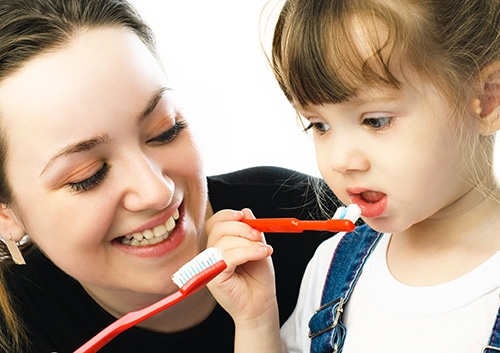Heart Disease and Oral Health
February 17th, 2021

Is there a link between oral health and heart health? This is a question that has been receiving a lot of attention in recent studies. While as yet there is no definitive study that proves oral health has an effect on overall heart health, there is also no definitive proof that oral health doesn’t affect heart health. So, what do we know, and, just as important, what should we do?
What do we know? One clear connection exists between gum disease and endocarditis, a rare, but potentially very serious, infection. When we neglect our gums, they bleed more easily. When gum disease advances, the gums pull away from the teeth. This creates pockets which can harbor more bacteria and plaque, leading to infection and even tooth and bone loss. And this bleeding and infection can be serious not only as a matter of dental health, but for your heart as well.
Endocarditis is an infection of the inner lining of the heart and the heart valves. When bacteria from other parts of the body, including your mouth, make their way into the blood stream, they can attach themselves to damaged areas of the heart. The resulting infection can become very serious, very quickly. If you have damaged heart valves or artificial valves, have an artificial heart, or have any type of heart defect, it is especially important to prevent gum disease from developing. Regular dental care will help prevent bleeding gums and infections, and reduce the danger of oral bacteria entering the bloodstream. Always let us know if you have any issues with heart health, and we will tailor our treatment for all of your procedures accordingly.
What else might link oral health and heart disease? Because an increased risk of heart disease has been found in patients with moderate or severe gum disease, there has been much speculation as to a possible cause-and-effect connection. For example, the plaque inside arteries which leads to heart attacks has been found to contain certain strains of periodontal bacteria. Other studies have searched for a causal relationship between inflammation resulting from gum disease and inflammation leading to heart disease. The body’s immune response to periodontitis and its potential consequences for heart health have also been examined. So far, there has been no clear evidence that treating gum disease prevents the occurrence or recurrence of heart disease.
So what should we do? This is the easy part. Keeping your gums and teeth healthy will increase your quality of life in immeasurable ways. And it’s not difficult! Regular brushing, flossing, and dental exams and cleanings at our East Lyme, CT office are the key to lasting oral health. If this also keeps your heart healthy, that’s the best possible side effect.



